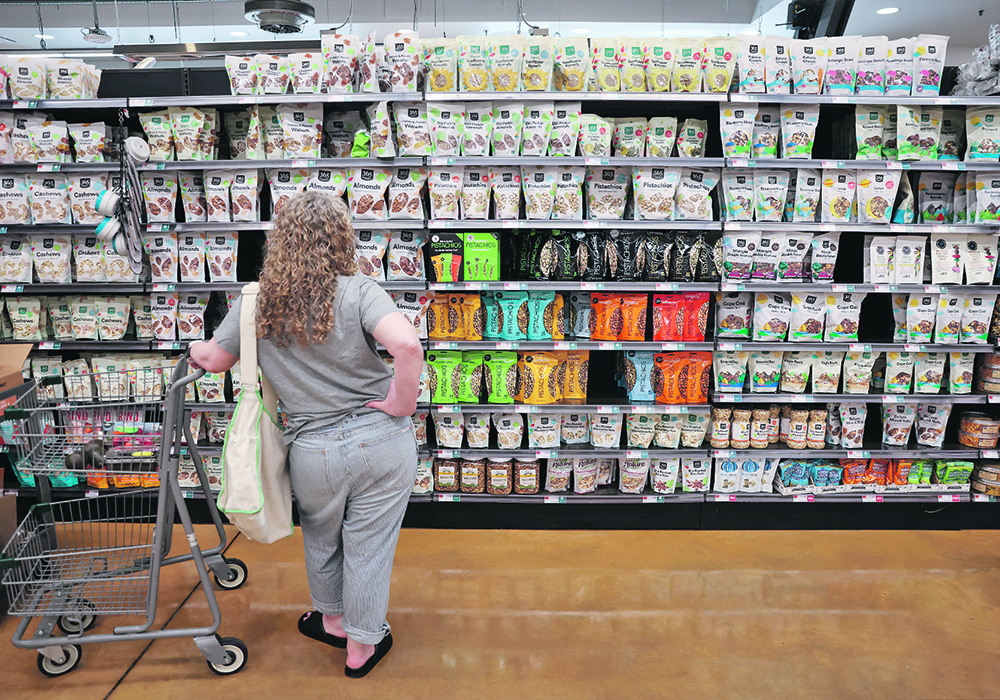Fear of recession and improving North American crop weather pushed grain and oilseed prices lower last week.
Traders in all investment sectors are nervous that central bank efforts to control inflation could restrain economies too much, pushing them into a recession that will cut demand for everything.
That nervousness spilled over into crop markets last week, pushing prices sharply lower even though many questions remain about how much grain will be harvested globally and how the war in Ukraine will affect that major exporter.
However, it is not unusual for crop markets to sag at this point in the year. In the Northern Hemisphere, weather worries during spring seeding are in the rear-view mirror and the harvest of winter wheat is beginning.
Read Also

No special crop fireworks expected
farmers should not expect fireworks in the special crops market due to ample supplies.
Don’t get me wrong, the struggle to get spring crops seeded in North America means a lot of it is behind normal and might flower in the hotter days of summer. And there is a greater likelihood of harvest of spring crops starting late.
But the market priced all that action in months ago, reaching new highs. Now traders decided to take profits and reduce risk. Their eyes are on summer weather. For the important U.S. Midwest, the outlook into early July is not bad.
The recent heat wave there stressed some crops but also helped advance others that were delayed because of late seeding.
Models still suggest the potential for hot, dry weather in the Midwest later in July, but as I write this June 24, the outlook for the early part of July is for benign crop weather.
The hot, dry weather in Europe is also expected to ease in July, good for spring crops but too late for winter wheat.
European Union average yields for soft wheat are projected at about 85.6 bushels per acre, down from the five-year average of 86.8 bu.
The poor condition of the U.S. hard red winter crop is well documented but soft red wheat is in better shape.
And Russia will soon harvest its wheat and production is forecast to set a record.
China’s news media reports the winter wheat harvest is wrapping up and officials are pleased.
Even in years as uncertain as this, harvest pressure weighs down prices.
In Canada, soil moisture in the western Prairies has improved greatly in the last few weeks. Alberta Agriculture reported June 21 that the amount of crop rated good to excellent had rebounded to the 10-year average. An area in central Saskatchewan was still looking for rain.
The improved moisture should lift canola conditions and that might have contributed to the larger decline in the oilseed’s November futures price, which fell about 12 percent last week compared to a decline of about eight percent in soybean oil.
Oilseed crop prices were also pressured by a sharp decline in palm oil as Indonesia ended its suspension of palm exports.
The canola market also noted Australia planted 8.4 million acres to the oilseed, an increase of 12 percent, according to that country’s Bureau of Agricultural and Resource Economics and Sciences.
ABARES forecasts average yields producing a crop of 5.6 million tonnes, the second largest ever, but that could climb because early growing conditions are mostly favourable.
Aside from the weather, the other wild card in the global grain supply is the negotiation to open a safe seaway passage for Ukrainian grain.
Several countries, including Turkey and Britain, are offering to clear mines at the port of Odessa and provide protection and insurance for ships, but given the intensity of the conflict and Russia’s demands for its co-operation, I’d be surprised if there is a quick agreement.
As I noted earlier, worry about recession also weighed on grain prices.
The U.S. Federal Reserve has decided aggressive interest increases are needed to fight inflation.
It raised rates by 75 basis points this month, the most since 1994, and most economists polled by Reuters expect another 75-point rise in July followed by 50 points in September.
Most expect the Bank of Canada will go with a 75-point increase at its meeting in July.
Some inflationary factors are calming. Supply chains are improving with port congestion easing and ocean freight rates declining. Oil and other commodity prices are down from recent peaks.
There are reports stocks of consumer goods have built up and major retailers might offer discounts this summer.
But none of this is showing up yet in national inflation reports in North America or Europe that are all around the highest in 40 years.
A growing number of economists believe the priority must be for central banks to hit the brakes hard enough to kill inflation but the result will likely be recession in 2023, defined as two quarters of negative growth.















